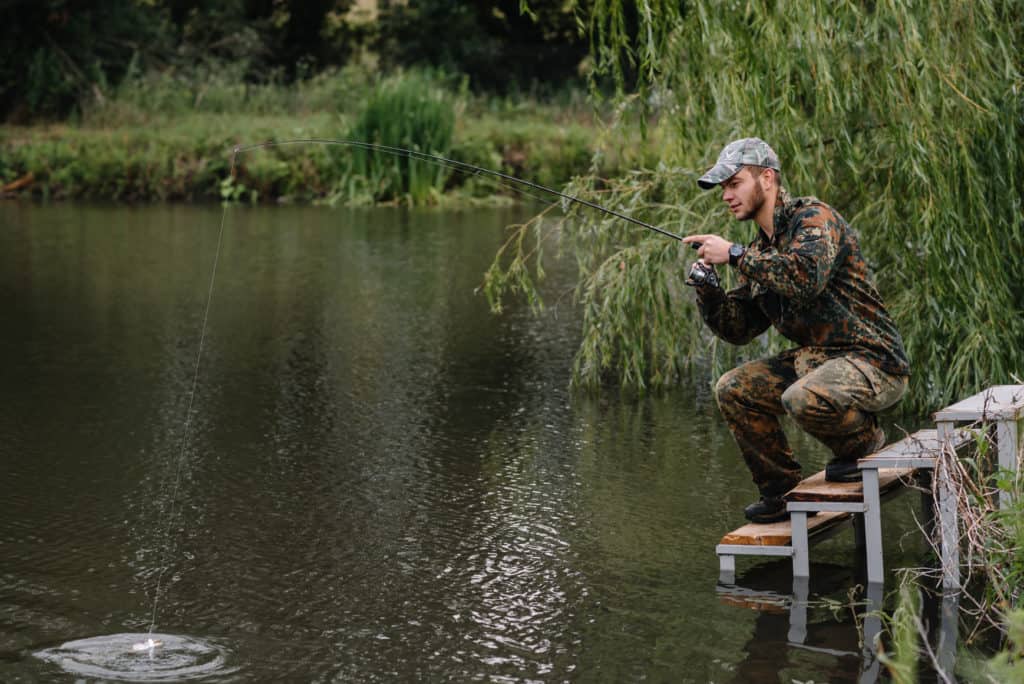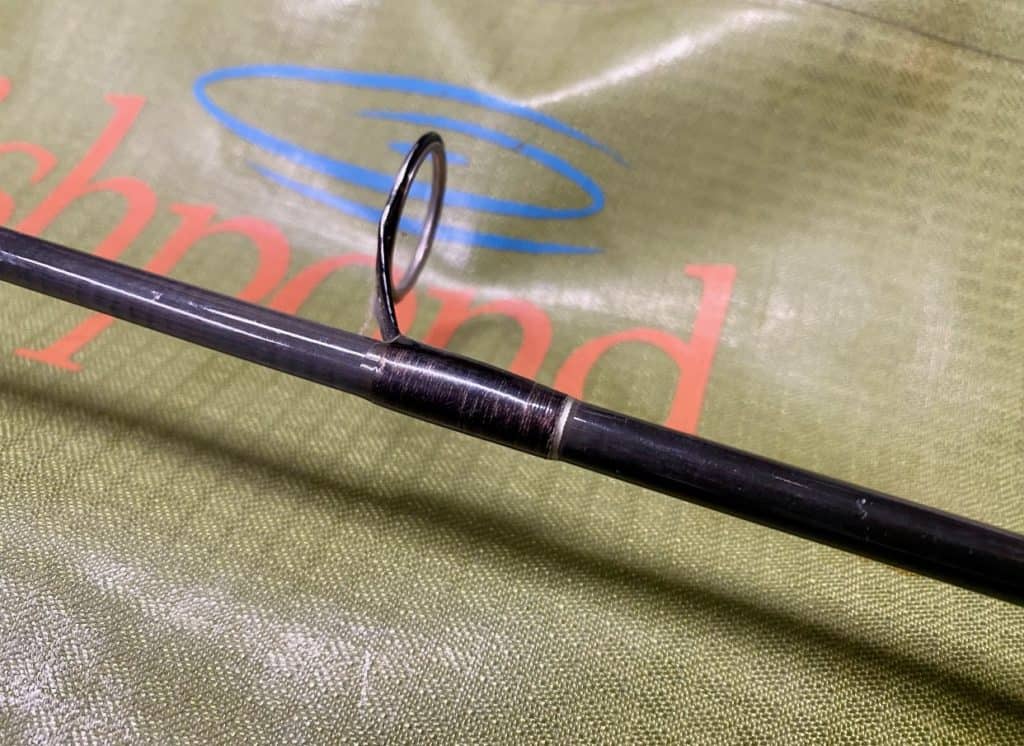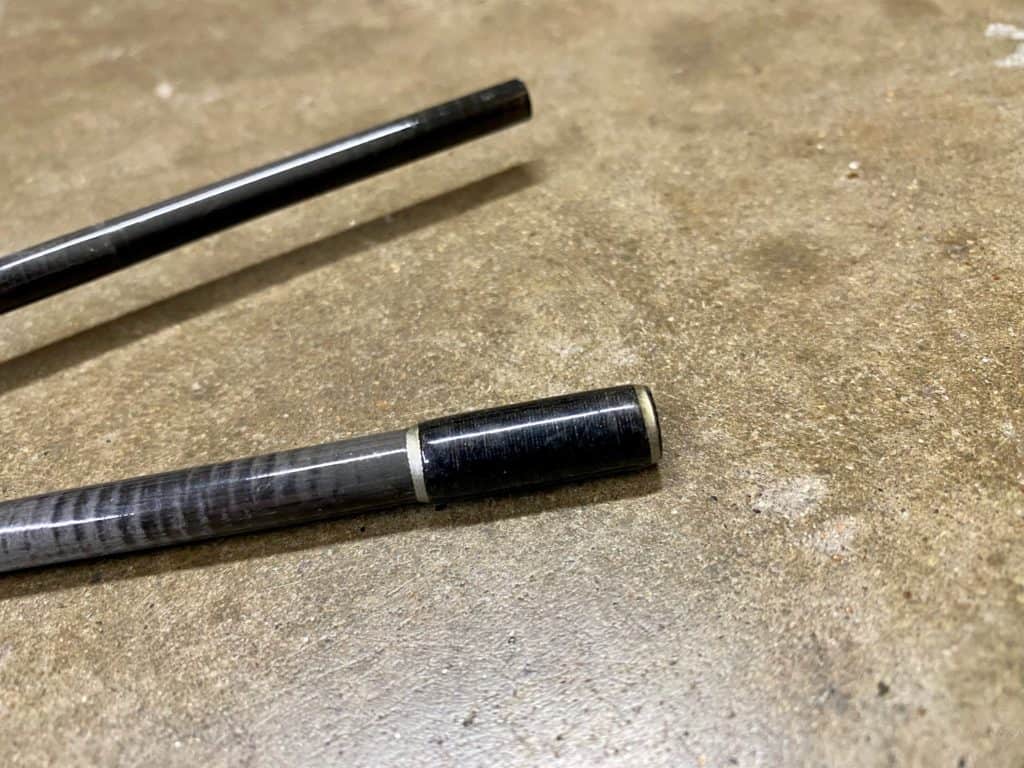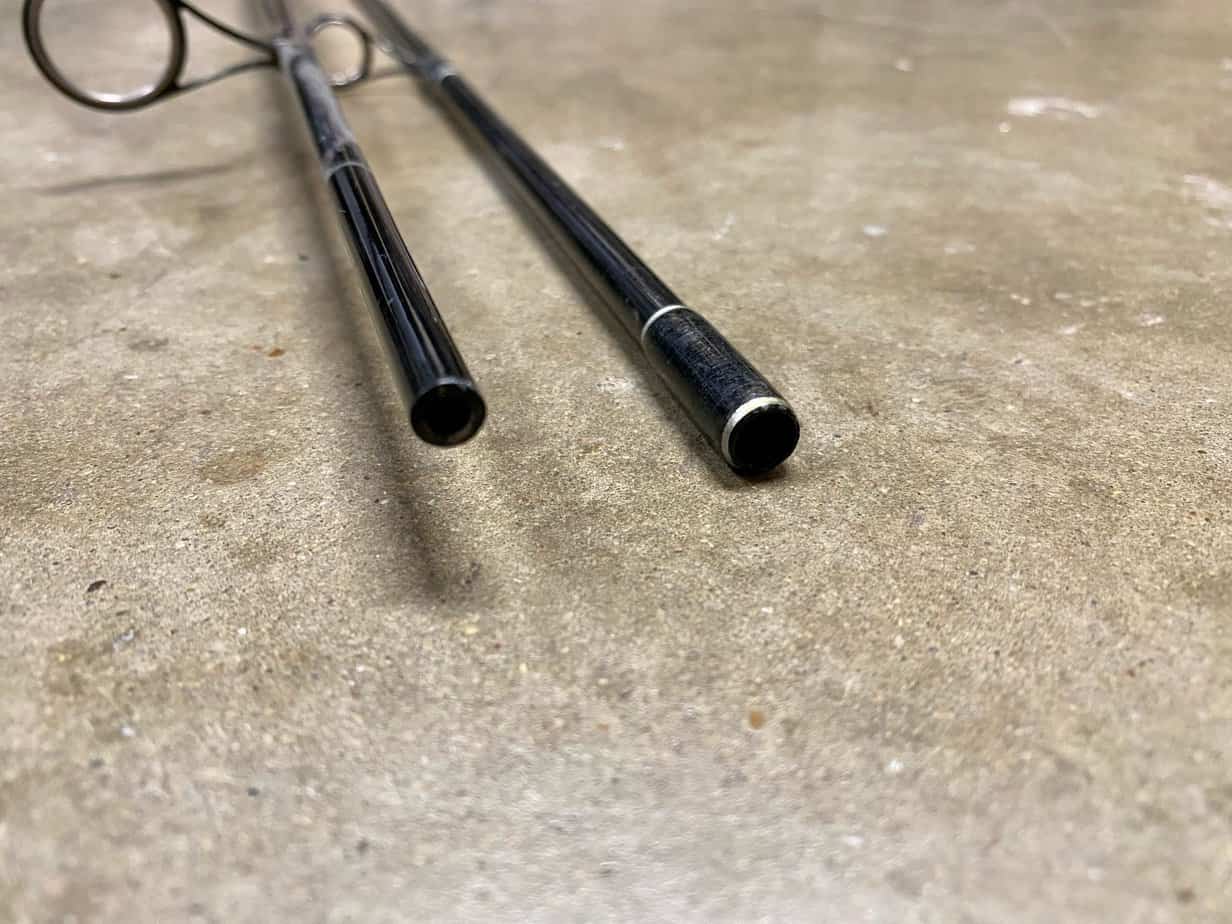Anglers are known for having an arsenal of rods based on the style of fishing they are doing on a day-to-day basis. But for fishers who are new at the hobby, you may ask the question, “are two-piece fishing rods any good?”
Yes, two-piece fishing rods are a great option for specific situations. Although the rod itself is weaker than a one-piece, they are easy to transport when hiking through brush, trees, and other obstacles. They are also great for beginners, travelers, and backpackers who plan on fishing.
In this article, we break down the pros and cons of a two-piece fishing rod, so you can decide if they’re the right fishing equipment for you.
Pros and cons of two-piece rods
With each product, you should always consider where you are going to fish, the travel and trip itself, and how much space you may have.
When fishing while traveling cross-country or backpacking, two-piece rods are a great option.
However, if you are fishing off the dock at your lake house, a two-piece rod isn’t offering you much.
Here are some of the pros and cons of this fishing hardware:
| Pros | Cons |
| -Can be packed up with relative ease -Storage simpler -Takes up less space -Quality continues to improve | -Not as durable as one-piece rods -Can come apart on heavy casts, especially as they age -Need to be put together and taken apart each time you move -Weakest point at the connecting socket often breaks -Loss of sensitivity |
Do two-piece rods break?

One of the major cons of two-piece rods is their weaker structure compared to one-piece rods.
Historically, anglers often complain that the two-piece rod would either separate easily with a strong cast, or the connecting socket, called the ferrule joint, would break with too much friction like a big fish or a snagged line.
However, modern technological improvements have created stronger connections with lighter and thinner rods.
Research top brands or ask a professional at your local angler shop for good recommendations.
Today’s best brands may shock you with how far you can push the rods.
Of course, without proper care, any fishing rod can break easily.
Be careful not to let the rod become too dirty, especially at the connecting joint, as this is the weakest part of the rig.
And if you continue to get your line caught in brush in seaweed, or on a downed log, don’t take your frustration out on the rod!
How do you keep a two-piece fishing rod together?

Most quality rods stay together by friction, simply sliding one part of the rod into the other. The ferrule joint is connected in two different ways:
- Spigot ferrules – Also called the “internal ferrule,” the connection is made by a separate piece called the over fit. Once you insert the top rod into the lower piece, the over fit slides over the connection. Though these offer a more solid connection, they are usually only available in more expensive pieces.
- Tip-over-butt ferrule – The more common of the two-piece rods, this is a simple connection where the top portion of the rod slides over the bottom. After wear and tear, the top generally pushes further down the bottom, meaning they are self-fixing.
Both of the ferrule technologies are over 50 years old, and both work about as well as the other. When you are choosing the rod type, the ferrule shouldn’t be a deciding factor.
Proper connection of the two pieces is key to keeping the pieces tight-fitting. Many beginner and even experienced anglers connect the rods together by lining up the guides on each side.
Though this may work, this actually loosens the connection. Instead, you want to connect the rods with the guiding lines about a quarter turn away, then twist to line them up.
This adds more friction to the connection.
Finally, you want to clean and maintain your rod as often as possible.
Brush away any sand or dirt on the connectors, as these could destroy the friction.
Additionally, leaving them assembled for an extended period, especially in bad weather, can cause your rod to become stuck.
How do you unstick a two-piece fishing rod?

The friction at the ferrule joint is an important part of keeping the rod together after multiple strong casts.
However, without proper care of assembly, you may get your two pieces stuck.
With any of the methods mentioned above, be sure you are pulling the sections of the rod apart without bending it. Otherwise, you may break the joint.
Usually, the main issue is your grip, especially if you are on the water.
Tape Method
First, you can try the tape method. Grab packing or duct tape and create two loops, sticky-side out. Grab the sticky loop in each hand, wrap it round the rod on either side of the joint, and twist as you pull it apart.
Additionally, you can try to use a non-slip pad, which some anglers bring inside their tackle box because of this issue.
Behind the Knee
If you aren’t getting enough pulling power, try holding the rod behind your knees, each hand on the outside of your knees.
Squeeze outwards with your legs, pushing your hands with the strength of your knees, and try giving it a couple of twists.
This should give you more than enough leverage to pull the pieces apart.
Ice Method
The ice method is used to shrink the rods, making it easier to separate them from each other.
There are several ways of cooling down the connecting joint, the easiest being simply laying a bag of ice on the ferrule joint for about ten minutes.
Find a Friend
Finally, you can ask a friend to help you to use the four-handed crossover method.
Face each other, and both of you will put a hand on both sections of the rod.
With the closer hand, you will pull, the further hand, push.
This should offer plenty of power to separate your rod.
If all else fails, congratulations! You now have a one-piece rod!
Final Thoughts
Today, two-piece rods are as reliable and strong as a one-piece rod.
Though set up is more complicated compared to one-piece, they are useful for traveling anglers, easier to store, and generally take up less space.
Two-piece rods are great for new and experienced anglers alike.

